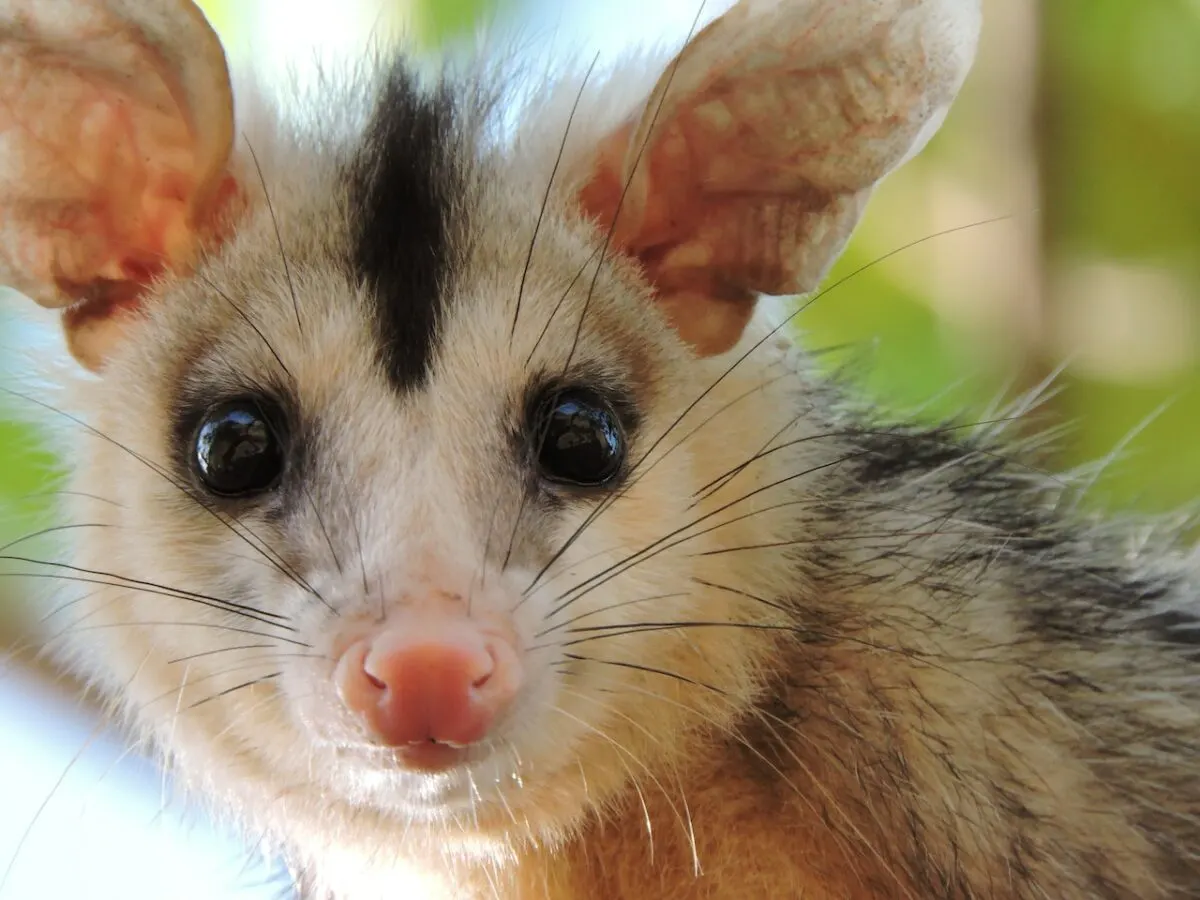Have you ever wondered how long possums live? This post will provide you with answer and assess the various factors that affect their lifespans.

Possums, often referred to as opossums, are little marsupials indigenous to North America. Opossums have a bad reputation for breaking into trash bins and being “scary-looking.” Although the reasons for their poor reputation aren’t untrue, they still deserve a better reputation and some credit for their creative problem-solving skills and intelligence.
However, in this post, we’ll only be taking a closer look at one of the possum’s traits. Namely, its lifespan. Every animal has an average lifespan, which depends on a variety of factors such as diet, environmental factors, potential predators, and body size – amongst many, many others.
Naturally, the very same applies to possums. Possums often survive for a reasonable amount of time, despite being fairly small creatures. Today we will take an in-depth look at exactly how long they live and the various common reasons that shorten their lifespan.
Let’s get some answers!
An Overview of the Possum
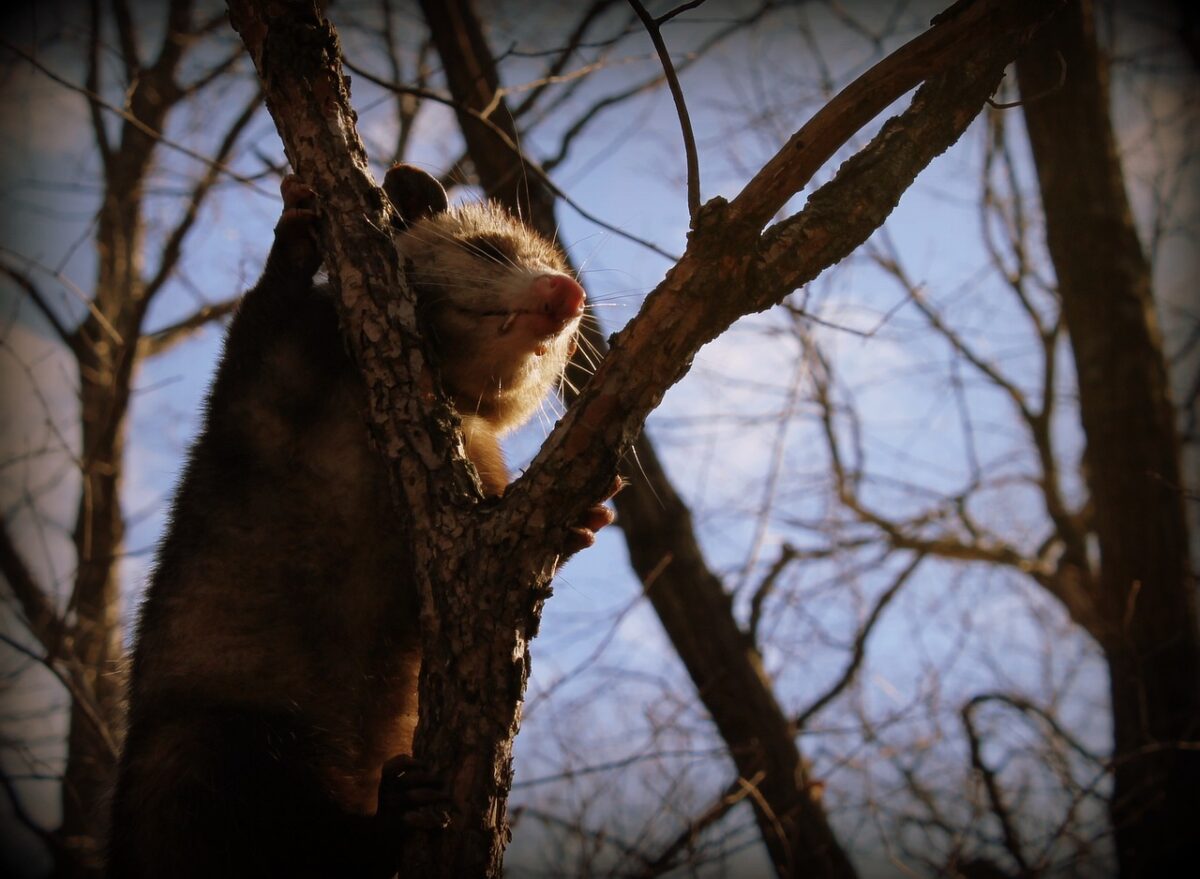
Before we investigate the lifespan of the Possum, let’s get to know this sneaky marsupial a little bit better!
Opossums are very misunderstood animals – they have a useful purpose despite many people considering them unpleasant or even pests. What is often overlooked is that they can be super-useful for your garden since they love munching on snails, rodents, and other insects, which could prove detrimental to your floral arrangements. Their iconic look also makes them easy to identify, and they are rarely confused with other marsupials.
Appearance
Possums are small to medium-sized marsupials. They are typically about the size of a house cat, and range from 1-3 feet in length (including the tail). Their body is covered in fur which is typically gray or brown in color, and they have a pointed snout.
One of their more iconic features is their hairless and prehensile tail. They also have small ears, beady eyes, and a bare patch of skin on their stomachs. To aid with their climbing and digging they possess short, five-toed feet with sharp claws.
Habitat and Geographic Range
Possums inhabit a variety of landscapes, from woodlands and forests to suburban and urban areas. In North America, they are most common in the southeastern United States, but they can also be found in parts of the Midwest and the West Coast.
In the wild, possums typically live in hollowed out logs, rocky crevices, and in the branches of trees. They are adept climbers and don’t mind making a home high up in trees. Overall, they’re an extremely adaptable species (which goes hand in hand with their opportunistic feeding pattern) and can live in various habitats, such as wetlands, desert areas, and even the edges of urban areas.
On a global scale, possums are found in tropical, subtropical, and temperate climates. Their global range extends from Australia and New Guinea, all the way to parts of Southeast Asia and North America. We bet you didn’t know that they are even found on some Caribbean islands!
Diet
Possums are far from picky when it comes to food. Essentially, they’re opportunistic feeders and will eat whatever they can get their paws on. As a result, their diet is primarily determined by their surroundings.
Commonly eaten foods include small mammals, birds, eggs, insects, fruits, vegetables, and fungi. That being said, snails are known to be one of their favorite meals. They are also known to scavenge for food, meaning that they will much on leftovers that other animals (or humans) have left behind. For example, they can often be found eating carrion, which is the decaying flesh of dead animals. Possums living in urban areas are known for having a preference for pet food.
How Long Do Possums Live?
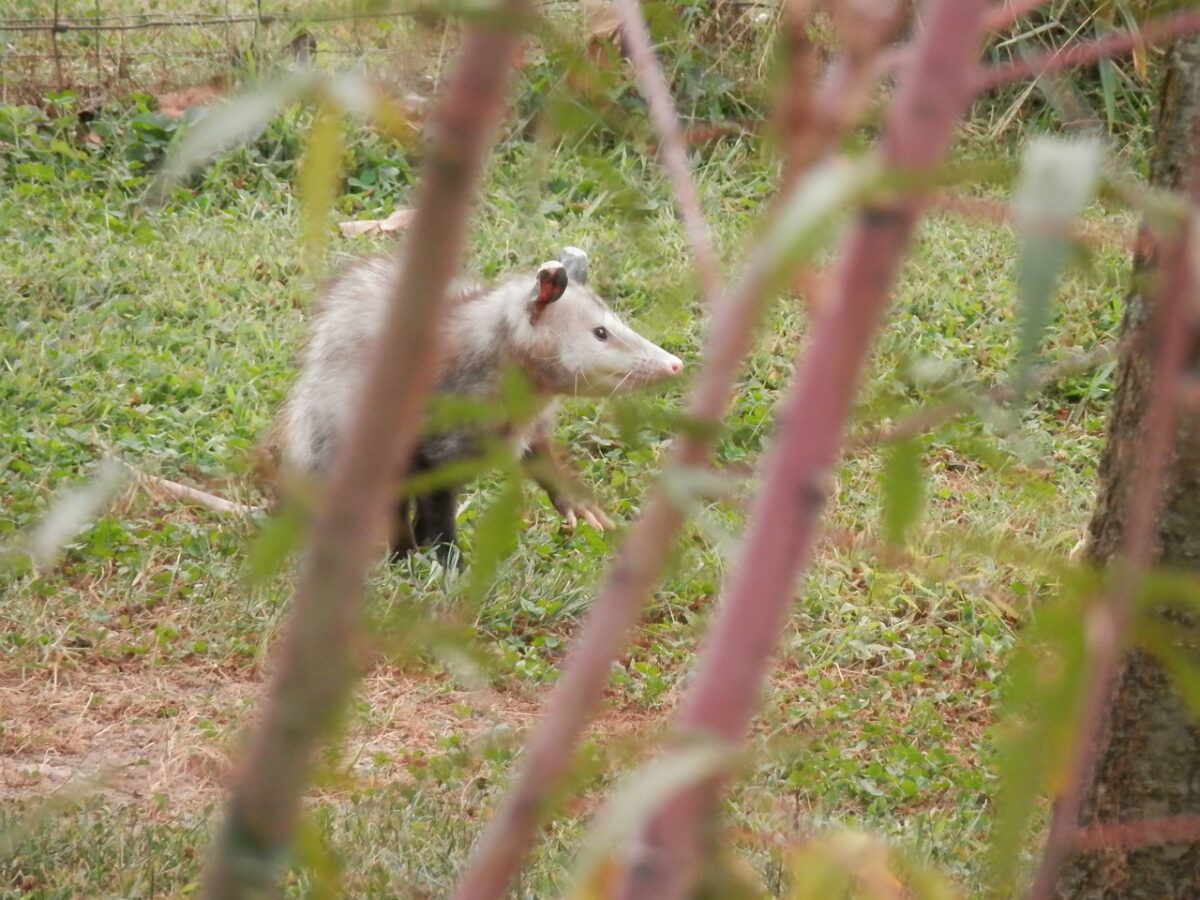
Possums can live both in captivity and the wild. As one would expect, the average lifespan differs between the two. Obviously, a possum living in captivity faces far fewer dangers – if any, that is.
So, possums can live to the age of four years in captivity. In the wild, their average lifespan is merely half of that; they typically only reach one or two years old. The oldest opossum documented to have lived in captivity reached four and a half years old.
Opossums seldom survive through their first year in the wild, making their life expectancy much lower than other animals. Now, let’s explore the various factors that shorten possums’ lifespans in the wild.
Reasons For Their Shorter Lifespan In the Wild
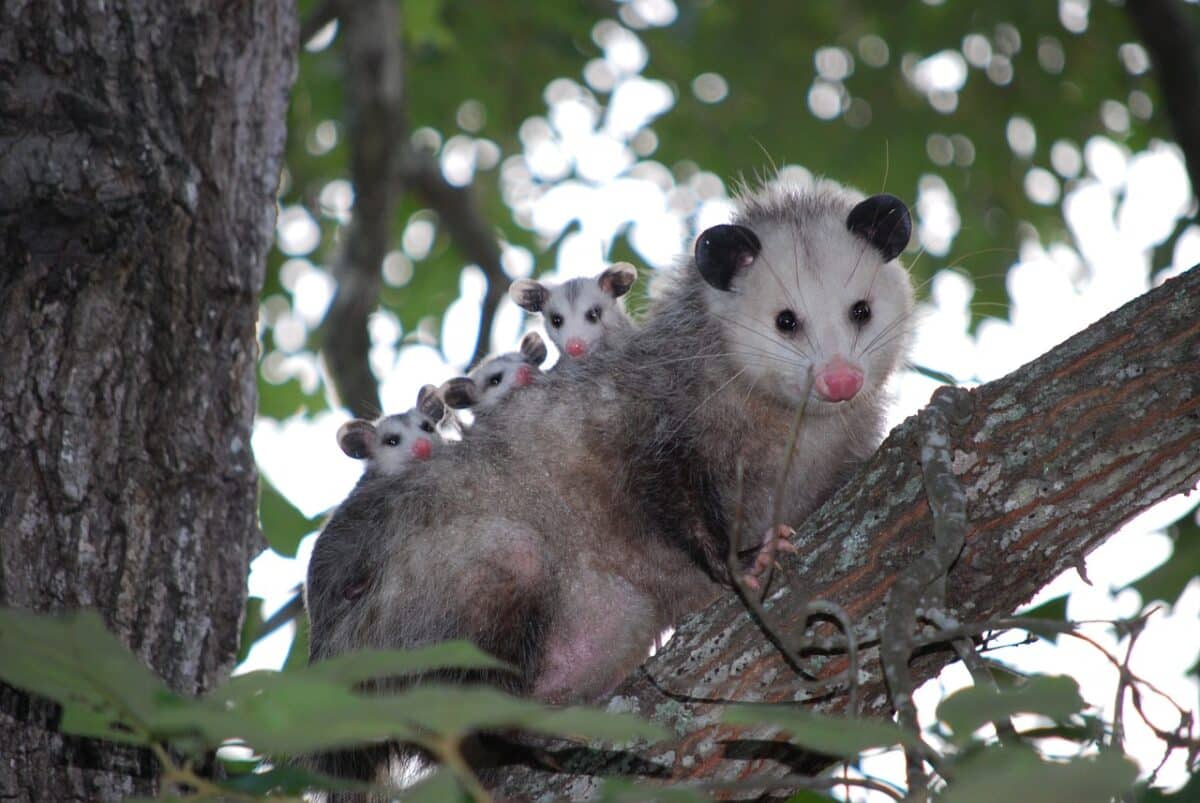
As previously stated, the lifespan of possums depends on the given factors. Possums only survive for one to two years in the wild, mainly due to the following reasons:
- competition for food and resources
- exposure to harsh weather
- predation by other animals
Predation by other animals is one of the primary causes of possums’ short lifespans in the wild. Stanford University Medical Center researchers have shown that a wide variety of predators extensively preyed on mainland opossums, causing their shorter lifespan. This was proven when the lifespan of possums was altered suddenly on a small island that became cut off from the mainland by a river, limiting access to numerous predators.
Possums are easy prey for larger animals, snakes, and birds of prey. Likewise, they also often fall prey to domesticated animals, such as cats and dogs.
Exposure to extreme weather conditions is another risk that may shorten a possum’s lifetime. Drought and other environmental variables that may restrict possums’ access to food and water can also impact their longevity.
Competition for food and resources may also influence possums’ short lifetime. Possums have a diverse diet and are opportunistic feeders, consuming various plants and animals. Nonetheless, they must compete with other animals for these resources. Because of the fierce competition, some possums may be unable to locate enough food and water to survive.
Lastly, road fatalities are another frequent cause of the death of possums.
Lifespan of Possums In Captivity
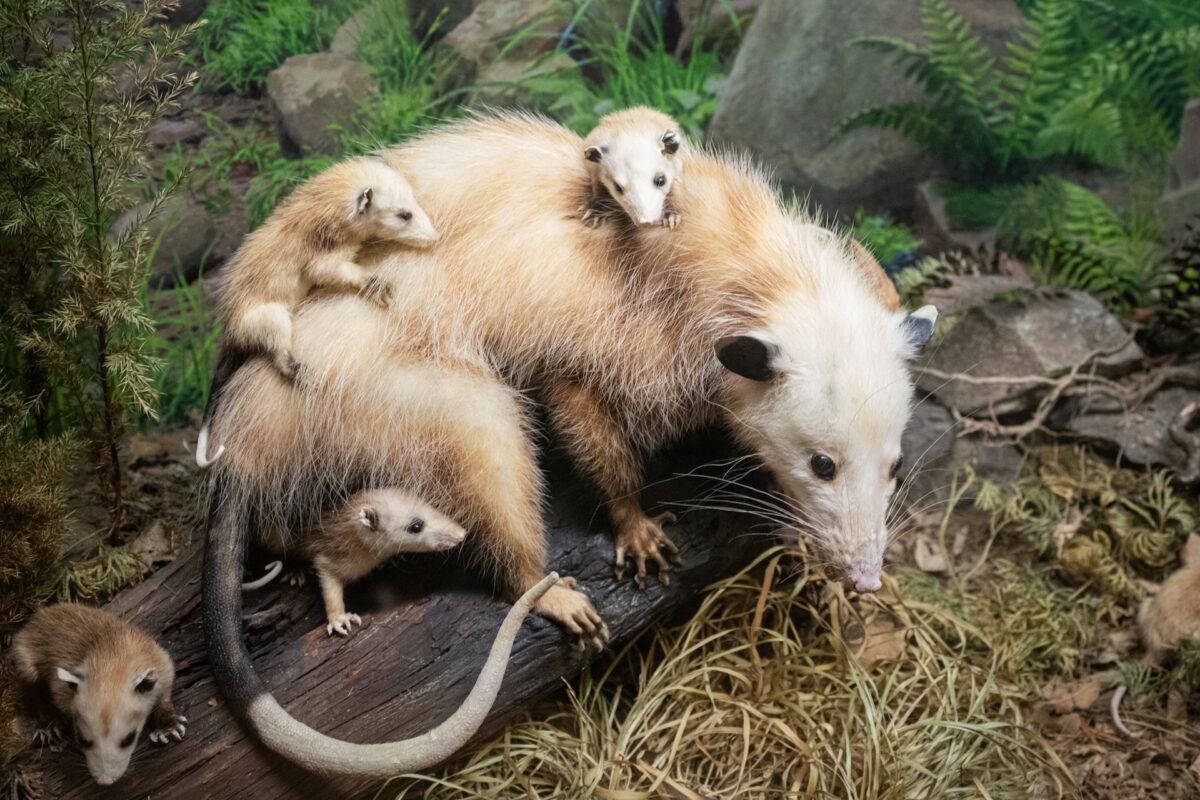
Naturally, most animals live longer in captivity as they are protected from the numerous threats and challenges that they face in the wild. Captive or domesticated animals also usually receive veterinary care, which significantly increases their lifespan.
As mentioned earlier, the oldest possum ever recorded reached an age of four years. This is much longer than their wild counterparts, but is still fairly low compared to other domesticated animals. Let’s explore some of the factors that affect a possum’s lifespan in captivity:
- A possum’s diet should contain a variety of fruits, vegetables, and proteins, such as insects and small rodents. A lack of proper nutrition can lead to health problems and a shortened lifespan.
- Health care is also important for a captive possum’s longevity. Regular checkups with a veterinarian can help catch any health issues early and can give advice on how to take care of the animal.
- The living conditions of a captive possum also play a role in determining its lifespan. A large enclosure with plenty of space and hiding places, as well as enrichment activities, can help keep a possum happy and healthy.
- Finally, stress levels are important for a possum’s lifespan in captivity. A possum should not be subjected to loud noises or frequent handling, as this can cause stress and can lead to health problems.
Signs That a Possum Is Dying

Understanding possum death’s warning signs and symptoms are important to understand if you keep a possum as a pet. Some of these are as follows:
- Its body becomes limp
- It releases the contents of its bowels
- Its tongue protrudes
- It begins to drool
- They become unresponsive even when you poke them
If you notice any of these signs in your pet possum, you should seek veterinary care immediately.
Why Do Possums Play Dead?
Possums are famous for their unique self-defense mechanism -playing dead. They play dead when they feel threatened. This behavior is known as “playing possum” and is a form of involuntary, coma-like state of shock. It is a way of intimidating predators and making them think the possum is dead and not worth eating. Possums also use this behavior to avoid being attacked and to buy themselves time to escape.
When a possum plays dead, it will become stiff, close its eyes and mouth, and secrete a foul-smelling liquid from its anus to make itself seem less appealing as prey.
Key Points
| The possums can live for four years in captivity, and one or two years on average in the wild. |
| A possum’s lifespan depends on a variety of factors such as predators, food availability and weather conditions. |
| Possum’s play dead as a defense-mechanism to deter prey from eating it, but also to give them time to escape. |
| In order to prolong your pet-possums lifespan you should feed them a nutritious diet, give them plenty of space, and take them for regular vet check-ups. |
Conclusion
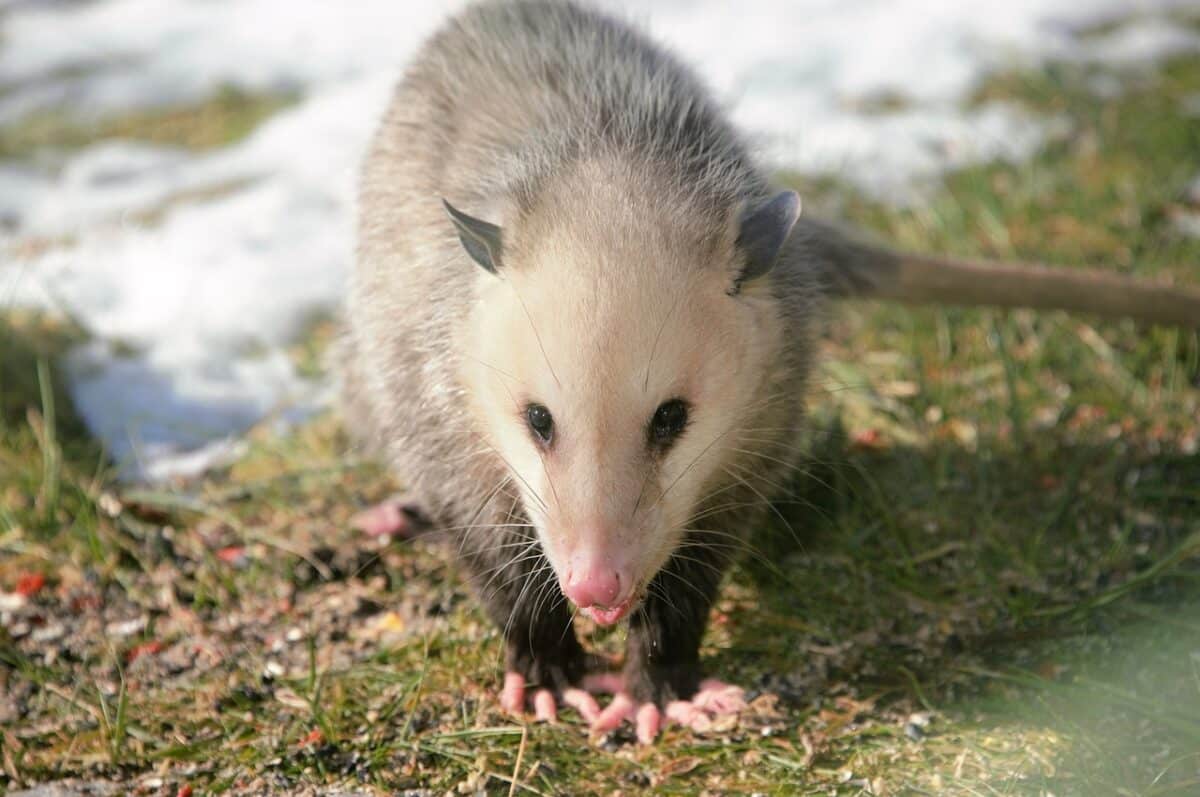
In this article we’ve gotten to know the possum, a medium-sized marsupial present throughout North America – but also many other parts of the world (even on some Caribbean Islands!)
Possums are opportunistic feeders and will eat anything from insects, fruits, nuts, snails, carrion, and even pet food. It is probably their opportunistic feeding pattern that has granted them their bad reputation, but what a lot of people don’t realise, is that they are actually beneficial to your garden by feeding on various insects and rodents which might damage your plants.
We have concluded that a possum living in the wild has a much shorter lifespan than one living in captivity. A wild possum will typically live to be 1-2 years old. Predators, vehicle collisions, lack of food sources, and harsh weather are some of the reasons for their short life span.
A pet-possum on the other hand, can live to be a whole four years old. To ensure that your pet possum lives a long and healthy life it’s important to provide them with a nutritious diet, regular vet-check ups, as well as a large space to roam around in with lots of engaging toys and activities. Also remember to not expose them to stressful situations and handling them too often.
Thank you for reading this article! If you’re curious to learn more about another marsupial, take a look at our post on Jacked Kangaroos.
Join our Forum for free today!


